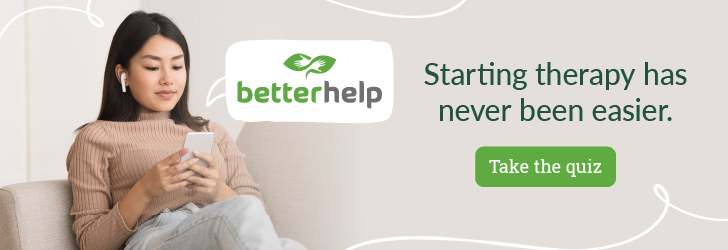Full Disclosure: Clicking on these links could mean a tiny commission for me, at no extra cost to you.
Burnout is more than just an inconvenient state of mind; it’s a state of emotional, physical, and mental exhaustion caused by excessive and prolonged stress. It occurs when you feel overwhelmed, emotionally drained, and unable to meet constant demands. As the stress continues, you begin to lose the interest and motivation that led you to take on a certain role in the first place. It can be a significant barrier to living a healthy, productive life, so i’t important to know the signs of burnout and implement strategies to overcome and prevent it.
What Is Burnout?

Signs and Symptoms of Burnout
Burnout manifests through various physical and emotional symptoms. These can range from chronic fatigue, insomnia, and a weakened immune system to anxiety, detachment, and a decrease in job performance. Recognizing these signs early is crucial in taking steps to address burnout before it escalates.
- Exhaustion: You know that feeling when you’re just completely drained, both physically and emotionally? Yeah, that’s exhaustion hitting you hard. Your body might be dropping hints with headaches, stomachaches, or playing tricks with your sleep and appetite.
- Isolation: Burnout has a way of making us feel like we’re drowning in responsibilities. So, if you catch yourself pulling away from your usual hangouts or avoiding heart-to-hearts with your squad, that’s a red flag waving.
- Escape fantasies: Ever catch yourself daydreaming about ditching it all and jetting off to a deserted island? Yeah, that’s your brain’s way of saying, “Enough already!” And if those fantasies start leaning towards unhealthy coping methods like reaching for a drink or diving into a tub of ice cream, it might be time to take a breather.
- Irritability: Burnout can turn us into ticking time bombs, ready to explode over the tiniest annoyances. Suddenly, mundane tasks feel like scaling Mount Everest, and any hiccup along the way can send us spiralling into frustration.
- Frequent illnesses: Burnout doesn’t just mess with our heads; it takes a toll on our bodies too. It weakens our immune system, leaving us wide open to every passing cold or flu bug. Plus, it opens the door to mental health struggles like depression and anxiety.
Causes of Burnout
Burnout often stems from work-related factors, including excessive workload, lack of control over work, insufficient rewards for effort, lack of a supportive community, and misalignment between personal values and job requirements. However, personality traits such as perfectionism and external pressures can also contribute to its development.
Some common causes include:
- Workplace Stress: High workloads, tight deadlines, lack of autonomy, and unclear job expectations can contribute significantly to burnout.
- Lack of Control: Feeling like you have little control over your work environment or the ability to make decisions can increase feelings of stress and contribute to burnout.
- Work-Life Imbalance: When work takes precedence over personal life, leading to limited time for relaxation, hobbies, and socializing, burnout can result.
- Lack of Recognition: Not feeling valued or appreciated for your contributions at work can erode morale and contribute to burnout.
- Conflict in the Workplace: Interpersonal conflicts, tension with supervisors or coworkers, and a negative work environment can all contribute to feelings of burnout.
- Unclear Expectations: When expectations regarding roles, responsibilities, and performance standards are ambiguous or constantly changing, it can lead to stress and burnout.
- Personality Traits: Certain personality traits, such as perfectionism, pessimism, or a strong need for control, can increase susceptibility to burnout.
- Job Insecurity: Concerns about job stability, layoffs, or reorganizations within the organization can heighten stress levels and contribute to burnout.
- Poor Work-Life Boundaries: Blurring the lines between work and personal life, such as constantly checking emails outside of work hours, can prevent proper relaxation and recharge, leading to burnout.
- Lack of Social Support: Not having a strong support system at work or in personal life can exacerbate feelings of stress and isolation, contributing to burnout.
It’s important to recognize that burnout is a complex phenomenon influenced by various factors, and addressing it often requires a multifaceted approach involving changes both within the workplace and in personal habits and coping strategies.
The 12 Stages of Burnout
Unlike the common cold or the flu, burnout doesn’t happen overnight. It tends to unfold over a period of time as the signs of burnout get ignored and the stress and symptoms continue to pile up. As such, psychologists Herbert Freudenberger and Gail North have outlined the 12 phases of this stress syndrome:
- Excessive drive/ambition: As you start a new job or an important task, you experience excessive ambition.
- Pushing yourself to work harder: This ambition pushes you to work even harder.
- Neglecting your own needs: You begin to sacrifice your own self-care like sleep, exercise, and eating well.
- Displacement of conflict:Rather than recognizing that you’re pushing yourself beyond your limits, you may find yourself attributing your struggles to your boss, the pressures of your job, or your colleagues.
- No time for nonwork-related needs: Work becomes your sole focus, even at the expense of family, friends, and hobbies, which now seem irrelevant.
- Denial: You might notice yourself getting a bit impatient with those around you, and instead of owning up to your actions, you find yourself pointing fingers at others, labeling them as incompetent, lazy, or just plain overbearing.
- Withdrawal: You start pulling away from your loved ones, feeling adrift and cynical. Suddenly, those invites to parties, movies, and dinner dates feel more like burdens than opportunities for fun and connection.
- Behavioral changes: As you trek closer to the edge of burnout, you may become more aggressive and snap at people, even your loved ones, for no reason.
- Depersonalization: You may start to feel detached from your life and your ability to control your life.
- Inner emptiness or anxiety: You might start to feel a sense of emptiness or anxiety creeping in. And to cope with these feelings, you might find yourself turning to thrill-seeking behaviors like excessive drinking, gambling, or overeating.
- Depression: The meaning of life begins to get a little hazy, and you begin to feel hopeless.
- Mental or physical collapse: This can impact your ability to cope. Mental health or medical attention may be necessary.
Exclusive Offer: Enjoy a FREE Month of Online Breathwork Classes!









